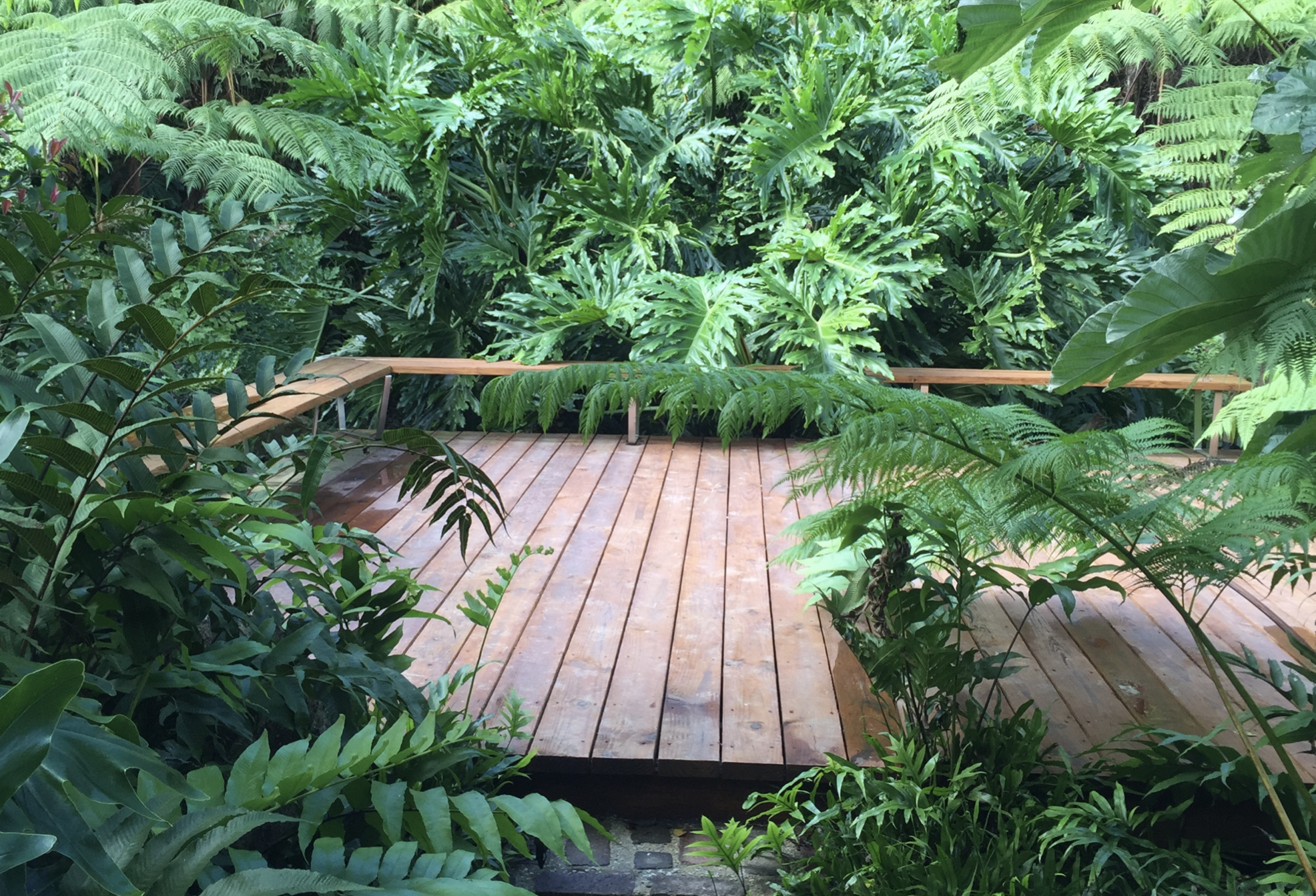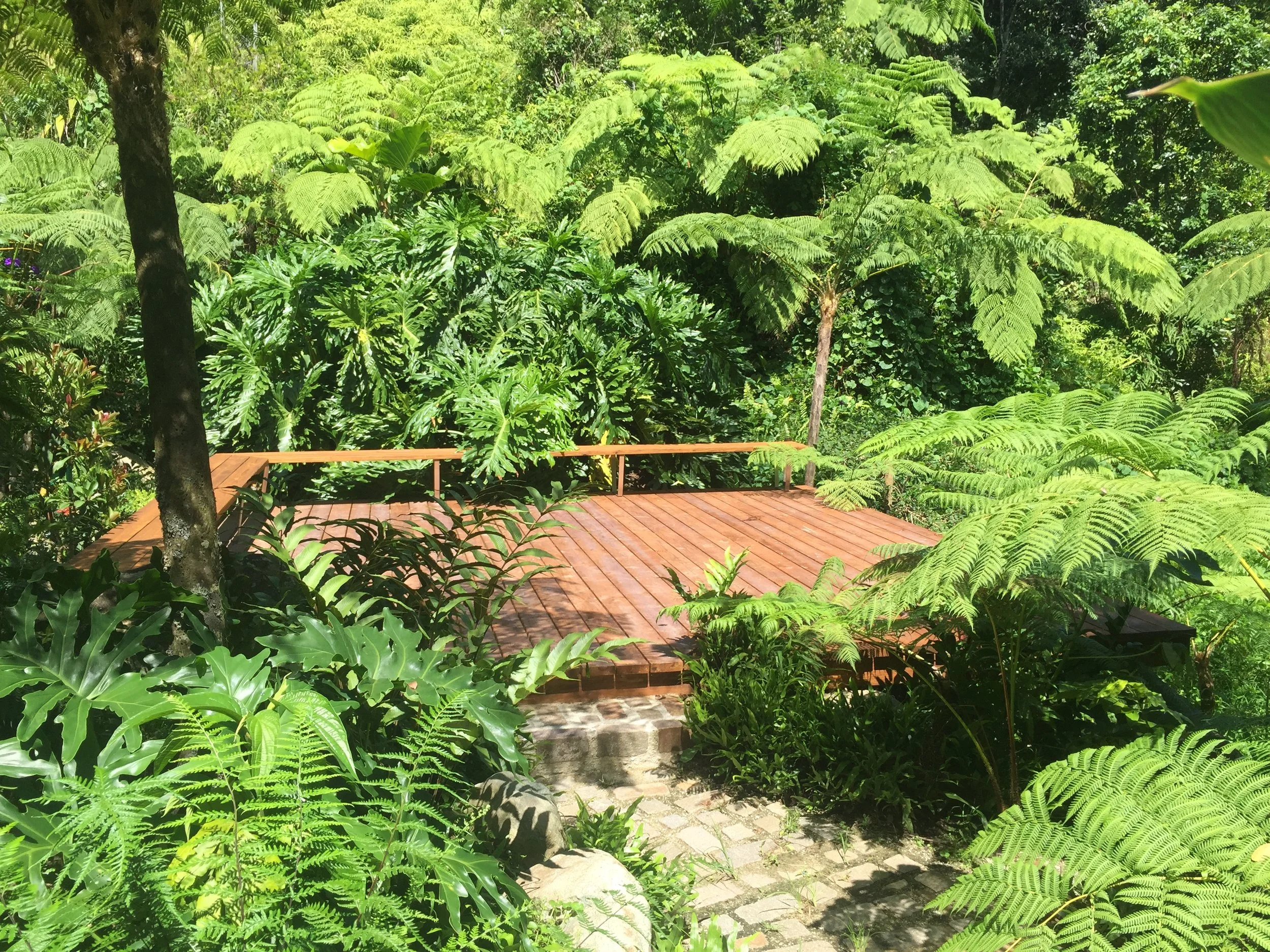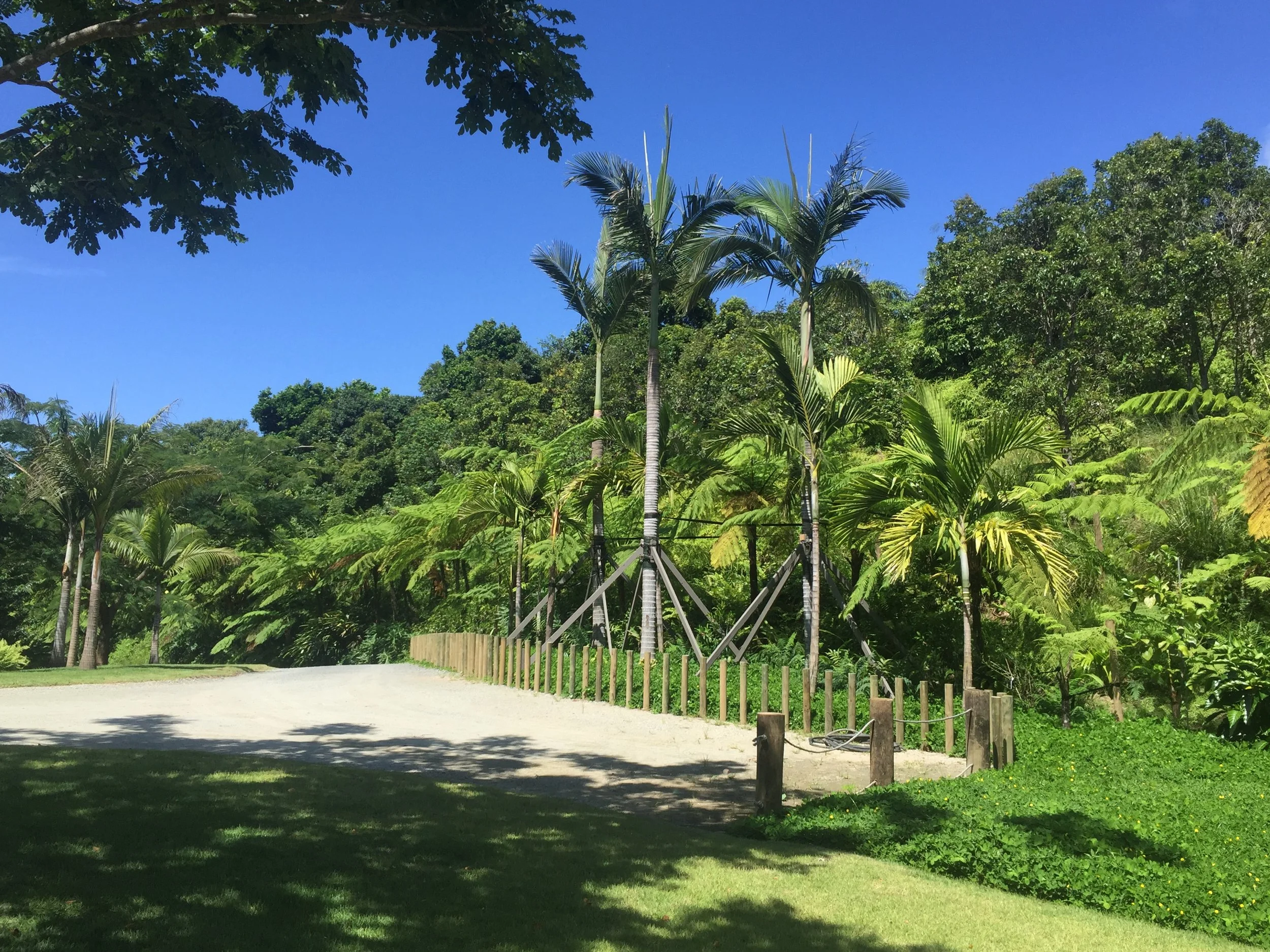MIRADOR AT MINA
NEAR EL YUNQUE NATIONAL FOREST, PUERTO RICO
PROJECT STATUS | BUILT
THE PROJECT BACKGROUND
This design-build intervention was completed directly at the site with the help of only hand sketches to guide construction. It is part of other projects implemented during 2011-2016 in a 500-acre parcel of private land in the southwest side of El Yunque National Forest, Puerto Rico.
THE SITE
One of the unpaved roads across the property dead-ended in an area called “Mina,” as the unusually cleared forest land beyond is believed to have been the access to a mine. The owner asked us if it was possible to create an experience or lookout point that would take advantage of this “borrowed” landscape beyond their property.


THE INTERVENTION
On the hillside to the left of the mina, a disturbed cleared slope invaded by exotic ferns and grasses had not been successful for previous tree planting attempts, as it had lost all topsoil due to erosion. We decided to hide the escarpment at its bottom portion with a grove of palms and other trees after some slope and drainage engineering that would allow replanting. By making a “step” at the bottom of the existing escarpment, we were able to stabilize and anchor a layer of new planting soil, tapering it towards the hillside for planting. By adding boulders, we were also able to create pockets of soil to plant.












We decided to eliminate the full tract of dead-end road and to excavate the road base materials replacing them with gravel for drainage and planting soil, raising the grade at the end of the slope considerably, so that a “mirador” or viewing platform could be created at the end, cantilevered over the Mina’s forest and mountains view. A meandering path of granite blocks in this replanted area would be discovered upon approaching the site.
We selected fifteen Areca catechu palms for their slim delicate shape. Their role is to provide a vertical lift that connects the view to the mountains beyond. Their thin, tall trunk could not be braced with stakes and we had to strap them to each other using the hillside as a support. The owners wanted to keep the existing sward of grass to the right for picnics and children’s play.




The path was laid out next using local granite pavers. Trees and flowering trees were planted among many native ones, like Goetzia elegans (matabuey), which were propagated in the nursery on-site from collected seeds. Tibouchina trees were added for their deep blue-violet flowers and the native forest palm Prestonea at the edges. The first video here shows the planting still in process along the 140-foot-long path.
This video was taken when planting was completed. The peripatetic experience among fruit trees, palms, ferns and rare or endemic species is slow, and one keeps looking up at the palms or sideways at other plants. At the end, the viewing platform of the Mirador is discovered by surprise among lush vegetation of large Cyathea arborea and Danaea jenmanii ferns that we transplanted from the wild along with Prestonea montana to tie with those seen beyond.
THE MIRADOR
A 15x15-foot small deck is cantilevered several feet above the nearby Mina’s property level, with boulders retaining the new grade below. It was completed by an L-shaped bench opposite to the view and no railings.



THE CROSSROAD
The helipad road ended as a T-intersection where one would turn left to continue or turn right to go to the Mirador at Mina. The view towards this important focal point at the end of the intersection was weak. The addition of some Montgomery and Ptychosperma palms lifted the eyes up, masking the spotted hillside, and a palito sinuous edge anticipated the turn to make.













